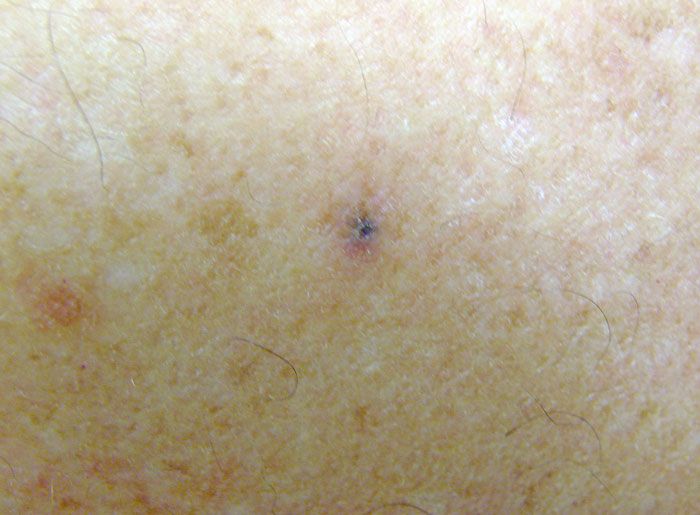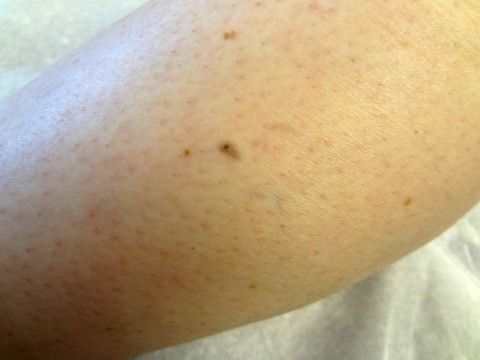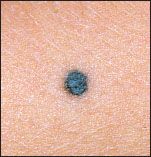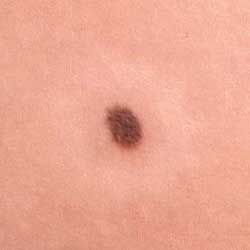Spotting Melanomas and Mimics: A Photo Quiz
As the incidence of malignant melanoma continues to rise, so does primary care physicians’ need to identify pigmented lesions for early detection. Take a look at these presentations to test your knowledge.

Question 1:
A 27-year-old woman whose mother and sister had melanoma noted a gradually increasing, asymptomatic dark spot on her right lateral thigh. The lesion shows a modest degree of asymmetry and pigment irregularity. Histology revealed a dysplastic nevus with moderate to severe cytologic atypia, an unusual benign mole that may resemble melanoma.
NEXT QUESTION »
For the discussion, click here.

Question 2:
A 58-year-old man presented when he noticed a flat, dark area on his left upper arm set against a background of fairly severe photodamage. The family history was positive for melanoma, and the almost black nature and variability in color of the lesion aroused suspicion for melanoma.
NEXT QUESTION »
For the discussion, click here.
Question 3:
Both parents of a 42-year-old woman who presented with “bumps on the face” had a history of non-melanoma skin cancer, and she was sure that she had the same problem. The pair of small papules with a yellowish hue and central dell is typical for her actual condition, which often occurs earlier in life and on a background of oily skin.
NEXT QUESTION »
For the discussion, click here.
For the answer, click here.

Question 4:
During a total body skin check of a 47-year-old woman with a history of non-melanoma skin cancer, a 5- x 3-mm pigmented macule was noted on the anteromedial aspect of her right foreleg.
NEXT QUESTION »
For the discussion, click here.

Question 5:
A 32-year-old woman complains that an asymptomatic mole on her back looks alarming to her spouse. There is no personal or family history of melanoma, and the remainder of her cutaneous examination is unremarkable. Some nevi have odd-appearing morphologies but well-recognized benign courses, such as this one, a “fried egg” nevus.
NEXT QUESTION »
For the discussion, click here.

Question 6:
This lesion appears to be a melanoma because of its dark color, but it is benign. The lesion usually is present from childhood but sometimes emerges in later life.
NEXT QUESTION »
For the discussion, click here.

Question 7:
The skin around a “mole” on a 13-year-old girl’s abdomen had gradually changed color. She had a halo nevus, a pigmented nevus surrounded by a tight ring of depigmentation. The uniform, symmetrical features of the central nevus and the surrounding halo help distinguish acquired halo nevi from the irregular starburst halo phenomenon that occasionally appears around a melanoma.
ANSWER KEY »
For the discussion, click here.
ANSWER KEY:
Question 1. B
Question 2. C
Question 3. B
Question 4. C
Question 5. D
Question 6. A
Question 7. B
Question 8. E